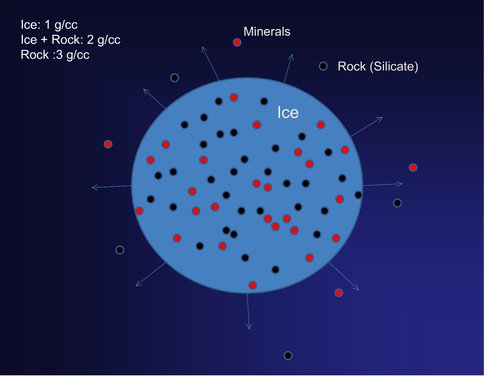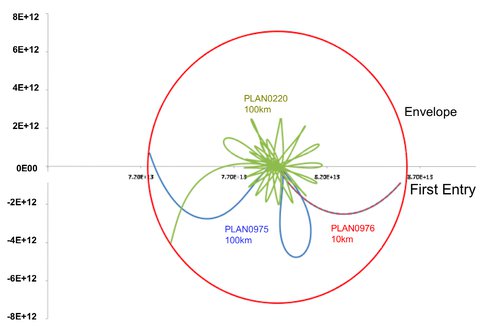2010 Annual Science Report
 University of Hawaii, Manoa
Reporting | SEP 2009 – AUG 2010
University of Hawaii, Manoa
Reporting | SEP 2009 – AUG 2010
Contribution of Planetesimals to the Composition of Gas-Giant Planets
Project Summary
We have studied the interaction of planetesimals with the gaseous envelope of a giant planet at the late stage of planet formation while the envelope is contracting. We have shown that because of gas drag, material from planetesimals is deposited in the gas which enhances its metallicity over that of the Sun.
Project Progress
The interaction of planetesimals with the gaseous envelope of a giant planet during the envelope’s contraction has been studied in the disk instability model. We considered a system consisting of the Sun, proto-Jupiter, and a protoplanetary disk. The disk contained 15000 objects with sizes of 1,10, and 100 km at two regions, 3.7-4.0 AU and 6.2-6.6 AU. The combined mass of the core and atmosphere of the proto-giant planet was set equal to the mass of Jupiter, and the radius of its envelope was taken to be 0.5 AU. The planetesimals were assumed to be composed of different materials: pure iron, pure rock, pure ice, or a mixture of rock and ice. In the last case, we assume that the rock component consists of small grains embedded in an ice matrix (figure 1). When the ice is lost (melted), any rock that is embedded in it is lost as well (i.e. released in the envelope).
Figure 1. Illustration of the composition of a planetesimals.
We integrated the orbit of each planetesimal taking into account the gravitational forces of the planet and the Sun. We followed the evolution of each object and identified those that entered the giant planet’s envelope. Figure 2 shows the results of some of our simulations. The objects shown here have identical bulk densities (1 g/cc). As seen from this figure, depending on the location where the planetesimal enters the envelope and also depending on its size, this object may pass through the envelope and deposit some of its material, or may be captured entirely. Simulations show that the rate of capture is higher for smaller planetesimals. Our simulations show that small planetesimals that consist of a mixture of ice and rock deposit larger amounts of mass as they interact with the envelope. These results suggest an explanation for anomalously high metallicity of Jupiter’s envelope.
Figure 2. Paths of planetesimals in an envelope. The horizontal and vertical axes show the x and y components of the planetesimal’s orbit in a reference frame moving with Jupiter. The figure shows the capture of two planetesimals; one with a 100 km radius (green) and one with a 10 km radius (red). The blue planetesimal has orbital parameters identical to the red one, but has a 100 km. Although the blue and red planetesimals both start at the same place with the same velocity, the red one is captured while the blue one passes through the envelope.
Publications
- Haghighipour, N. (2009). Planetesimal Capture as a Clue to the Formation of Gas-Giants. Dynamics of Outer Planetary Systems. Edinburgh, UK.
-
PROJECT INVESTIGATORS:
-
RELATED OBJECTIVES:
Objective 1.1
Formation and evolution of habitable planets.


